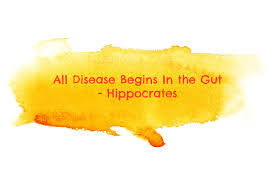Candida & Parasites...the pre&pro biotic way of treatment
- Nicci B

- Oct 16, 2018
- 3 min read

Other than worms, of which there are tape, pin, round and more, we are also harbourers of flukes, amoeba’s, bacteria (h. Pylori) and Candida.
Since we co-exist as part of nature it is only normal to carry a variety and number of parasites. However, things go awry when their numbers increase as this puts our homeostasis out of kilter and has some nasty effects on us e.g. cravings for things, joint aches, feeling fatigued etc, the symptoms are actually very similar to many we see in adrenal fatigue and malnourished individuals.
Essentially, what we become is malnourished as we are not able to absorb and assimilate the nutrients we need from the food we eat. We experience gut dysbiosis and, potentially, leaky gut syndrome, when parasites and Candida grow out of control due to a variety of causes, e.g. anti-biotics, diet high in saturated fats and sugar, medicines, stress, etc.
Getting rid of parasites should be done every 6 months, or quarterly if we have domestic pets.
Candida is trickier to remove and it takes time and, initially, will leave one feeling less well before real improvement is made.
It is important to note that some ‘bugs’ are good for us such as probiotics, which are necessary to help us digest food and promote good systemic flora.
According to The Daily Burn, the most common probiotic bacteria come from two genus groups: Lactobacillus or Bifidobacterium, although there are many others.
Each group of bacteria has different species and each species have different strains (the “code” at the end). Researchers are still studying which strains should be used for which health conditions, but a variety have been demonstrated to help with the following:
* If you’re travelling abroad … Don’t let 'Delhi belly' get the best of you or your vacation. Taking Saccharomyces boulardii weeks before your trip may help prevent traveller’s diarrhoea, which usually comes from ingesting food or water that’s been contaminated with bacteria.
* If you’re lactose intolerant … Lactobacillus bulgaricus, Lactobacillus acidophilus and Streptococcus thermophilus produce the enzyme lactase that helps the gut digest and absorb lactose.
* If you have irritable bowel syndrome (IBS) or gastrointestinal distress … Bifidobacterium infantis 35624, Lactobacillus plantarum 299V or Bifidobacterium bifidum MIMBb75 have been shown to help regulate bowel movements and relieve bloating, pain and gas. More research is needed to determine which other probiotics might help treat IBS.
* If you’re taking antibiotics … These drugs wipe out the bacteria in your body — the good with the bad — leaving you susceptible to diarrhoea or infections. Taking a probiotic can help prevent this. Both Dr. Sockolow and Challa recommend taking Lactobacillus rhamnosus GG and/or Saccharomyces boulardii six hours after each dose of antibiotics. Increase the dose to 10 billion CFUs per day and continue for one to two weeks after you stop taking the antibiotic.
* If you have eczema … Lactobacillus rhamnosus HN001 and Lactobacillus fermentum VRI-003 PCC have been shown to help treat those itchy, scaly skin rashes — especially in children.
* If you have a cold … Some research suggests that Bifidobacterium animalis lactis Bi-07 and Lactobacillus acidophilus NCFM can help reduce the duration and severity of the common cold and flu by enhancing the body’s production of antibodies.
* If you have a vaginal infection … Lactobacillus acidophilus, Lactobacillus rhamnosus GR-1 and Lactobacillus reuteri RC-14 have been shown to help prevent and clear up bacterial vaginosis and urinary tract infections in some individuals. Researchers point to Lactobacillus reuteri RC-14 and Lactobacillus rhamnosus GR-1 as the most effective stains to protect against yeast infections as they’re especially adept at colonizing the vaginal environment and fighting off unwelcome bacteria and fungi.
* If you have bad breath, gingivitis or periodontitis … A probiotic lozenge or mouthwash might be your best bet. Lactobacillus reuteri LR-1 or LR-2 promote oral health by binding to teeth and gums, preventing plaque formation in the mouth. Research has demonstrated the ability of Weissella cibaria to freshen breath by inhibiting the production of sulphur compounds in the mouth.
Feed Your Flora
The bacteria in your colon thrive on non-digestible fibre, also known as prebiotics. Feed your bacteria with two to four servings of prebiotic-rich foods such as, garlic, whole grains, artichokes, chicory, bananas and/or honey.
Some probiotic supplements come with prebiotics in them, but know that they’re usually listed as inulin.
“Bacteria in the belly love fibre,” says Sockolow. “They break it down, leaving behind nourishing acids in the process, so it’s a win-win.”
Try getting at least 38 grams of fibre a day from fruits, vegetables and legumes, Sockolow recommends.
Fermented & cultured foods are a rich source of both pre & pro-biotics. Examples of fermented foods are:
* kefir
* sauerkraut
* kimchi
* kumbucha
To deal with your gut issues please book a consult so we can identify & address concerns:


Comments